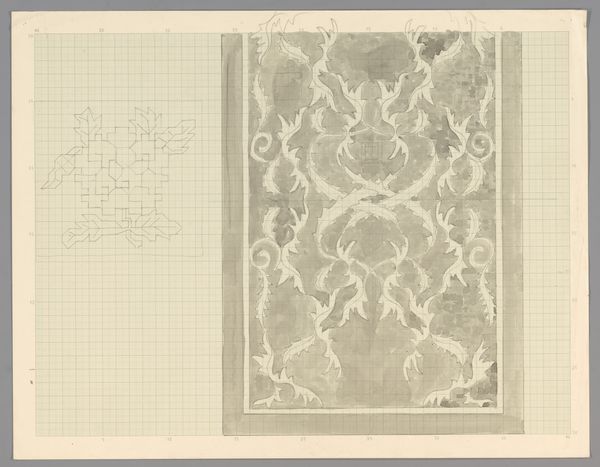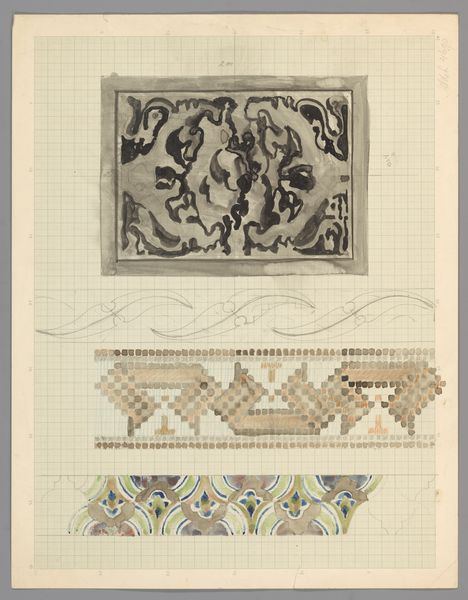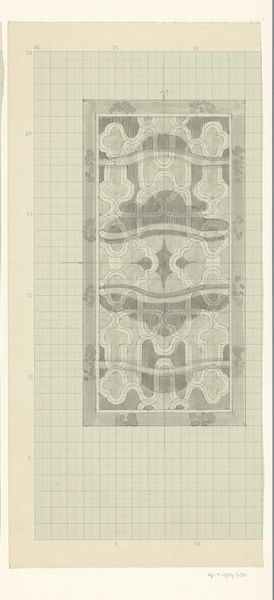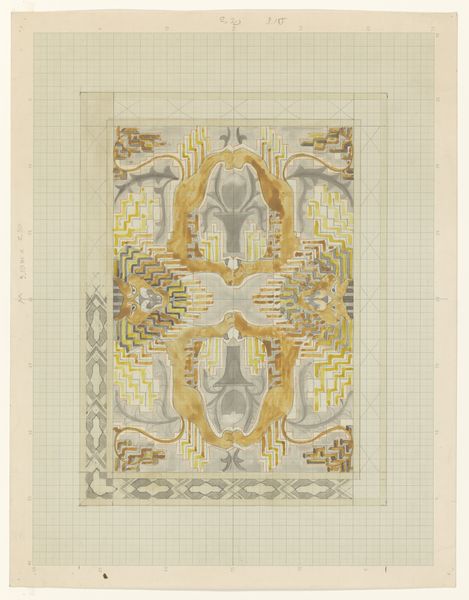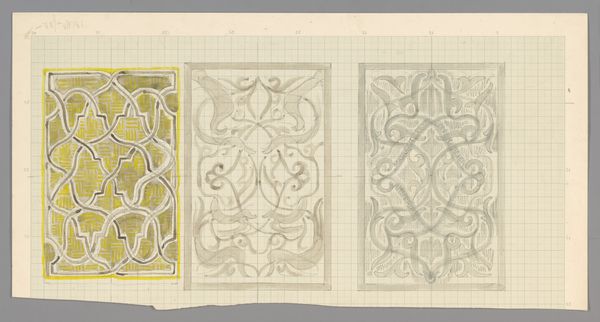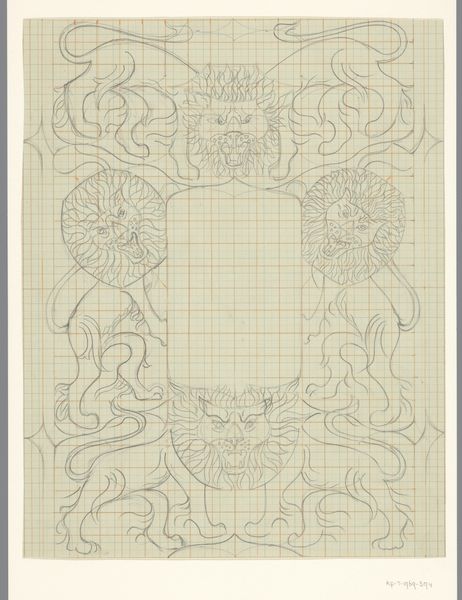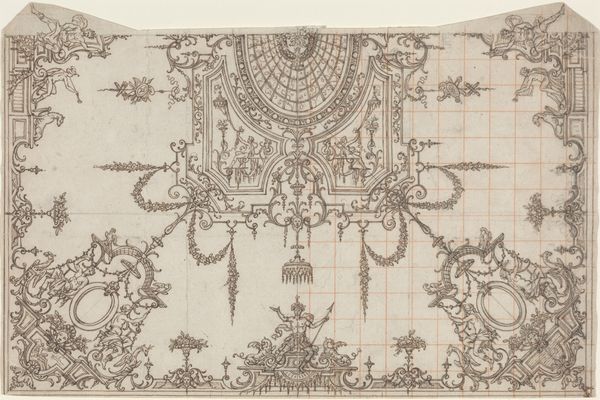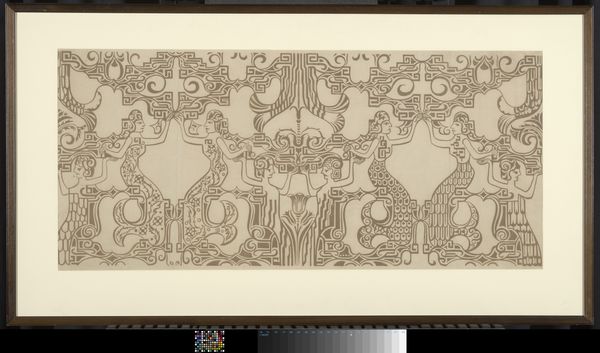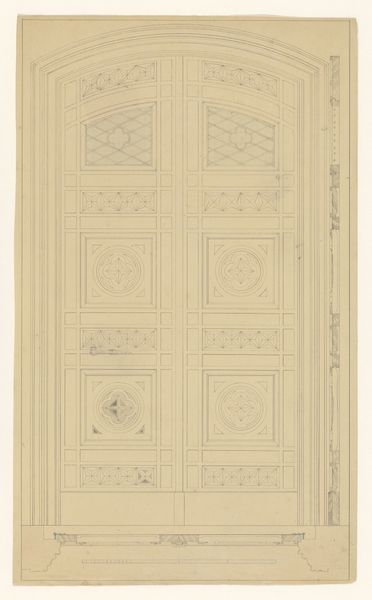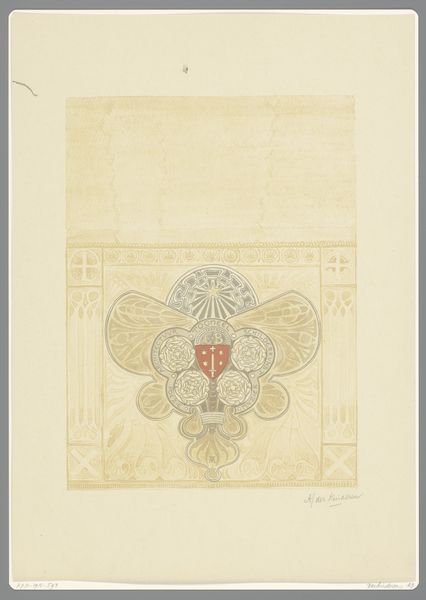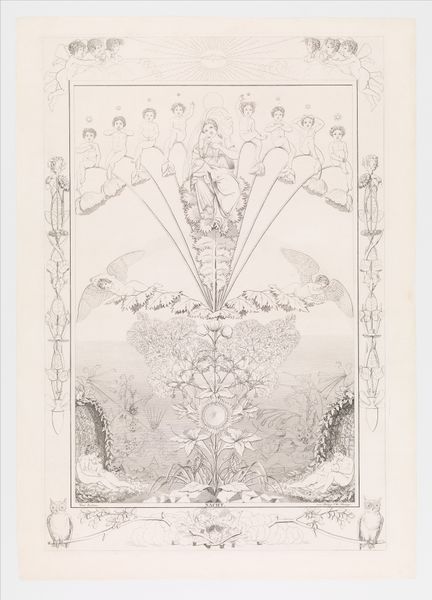
Twee ontwerpen voor kleden voor de Java-China-Japan-Lijn 1874 - 1945
0:00
0:00
drawing, paper
#
architectural sketch
#
drawing
#
aged paper
#
architectural plan
#
architectural design
#
architectural form
#
paper
#
geometric
#
orientalism
#
architectural section drawing
#
architectural drawing
#
architecture drawing
#
architectural proposal
#
architectural
#
decorative-art
Dimensions: height 431 mm, width 335 mm
Copyright: Rijks Museum: Open Domain
Editor: So, this is *Twee ontwerpen voor kleden voor de Java-China-Japan-Lijn* by Carel Adolph Lion Cachet, dating from between 1874 and 1945. It’s a drawing on paper of two rug designs. I’m immediately drawn to the sort of ghostly, repeated figures. What jumps out at you? Curator: The recurring motif of birds, abstracted into almost geometric shapes, fascinates me. Think of birds across cultures - messengers, symbols of freedom, even souls taking flight. How might these repeating avian patterns, within the context of the Java-China-Japan line, have spoken to travellers or the cultures these ships connected? Editor: That's a really interesting point. The designs do feel very deliberate, less purely decorative, almost like they’re meant to *mean* something to those seeing them. Is that tied to "orientalism," as described in the tags? Curator: Precisely. The "orientalism" tag is critical here. The designs engage with established visual vocabularies of Asian art and design. Notice the symmetry, the controlled chaos within the borders. Are they accurate reflections or romanticized projections for a European audience? Are they bridging cultures or reinforcing stereotypes? The imagery presents a simplified and perhaps stylized impression. Editor: So it's more about an imagined idea of the East rather than an actual depiction. Curator: Yes, and that "imagining" becomes incredibly powerful. What emotional impact might the artist have hoped for when travellers encountered these rugs on the ships? Comfort? A sense of adventure? Something more? The Java-China-Japan line wasn't just transporting goods; it was ferrying ideas, expectations, and colonial power. These rug designs were very active participants. Editor: I hadn't thought about the designs in such a loaded context. I guess, seeing them as ‘decorative art’ I was really missing the point! Curator: It is a lot to unpack.
Comments
No comments
Be the first to comment and join the conversation on the ultimate creative platform.
